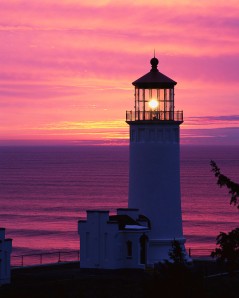After Moses had sent away his wife Zipporah, his father-in-law Jethro received her and her two sons. One son was named Gershom, for Moses said "I have become a foreigner in a foreign land”; and the other was named Eliezer, for he said, “My father’s God was my helper; he saved me from the sword of Pharaoh.” Exodus 18: 2-4 NIV
In the Scriptures, names help map the spiritual journey of the people involved. Here in Exodus 15, following the defeat of the Amalekites in Israel's first armed wilderness conflict, Moses built an altar and gave it a name: Jehovah Nissi - the Lord is our banner. It became a visual reminder of God's miracle of protection and speaking or hearing it's name was intended to trigger the memory of the story of what happened there.
As the next chapter begins, Moses family arrives. Forty years prior to becoming Israel's leader, Moses had fled into the wilderness after killing an Egyptian slave master. Jethro took him in and eventually Moses married Jethro's daughter and started a family. He gave each of his sons a special name as well - so that the boys served as audio/visual reminders of what God had done for him.
God constantly uses this type of spiritual mapping tool to keep the minds of his people focused on him. It also helps future generations to see and remember hos love, care and provision.
Several years ago, I taught a workshop at a women's convention and used this spiritual mapping exercise to help them create a visual memory trigger of God's work in their lives.
We started with a blank sheet of paper and drew a lighthouse in the upper left-hand corner.
 This is represented the point where we began our journey with Christ, our personal Light. Then we drew a ragged coastline diagonally across the page to the bottom right-hand corner and placed another lighthouse there, representing where we are today. This became a visual map and timeline of our Christian walk.
This is represented the point where we began our journey with Christ, our personal Light. Then we drew a ragged coastline diagonally across the page to the bottom right-hand corner and placed another lighthouse there, representing where we are today. This became a visual map and timeline of our Christian walk. One side of the line represented the sea. On the sea side, we named events or people that hurt or troubled us on our spiritual journey; anything that threatened to overcome us spiritually. Some women got really creative drawing rocks, whirlpools or great whales in their oceans, each with a name. LOL!
The coast side represented the solid rock of Jesus Christ. Starting from the time we accepted Christ, we drew small lighthouses all along the coastline, corresponding to the troubled times. We named these lighthouses for people who influenced us, prayed for us and supported us during the crises. I included the names of Bible women who had influenced my life as well.
Next, we drew a second set of lighthouses and named them to represent events like answers to prayer, major or minor miracles that impacted our lives, corresponding to the hurtful things on the sea side. We also included scripture verses or promises that were important during those stormy times of our lives.
What I discovered by doing this exercise was that the lighthouses I had drawn were spaced expertly down the coastline. There were no blind spots where the light or influence of Christ did not reach. Christ always sent someone or something to help light my way during the stormiest parts of my life, even though I didn't always realize it at the time!
I like to get this "map" out often - especially when I feel down or discouraged because it helps me see more clearly that Christ’s Light is always shining out across the difficult waters I am experiencing.
What names would you include on a map of your spiritual journey? How has Christ met your needs or encouraged you along the way through people, events or his word?
No comments:
Post a Comment